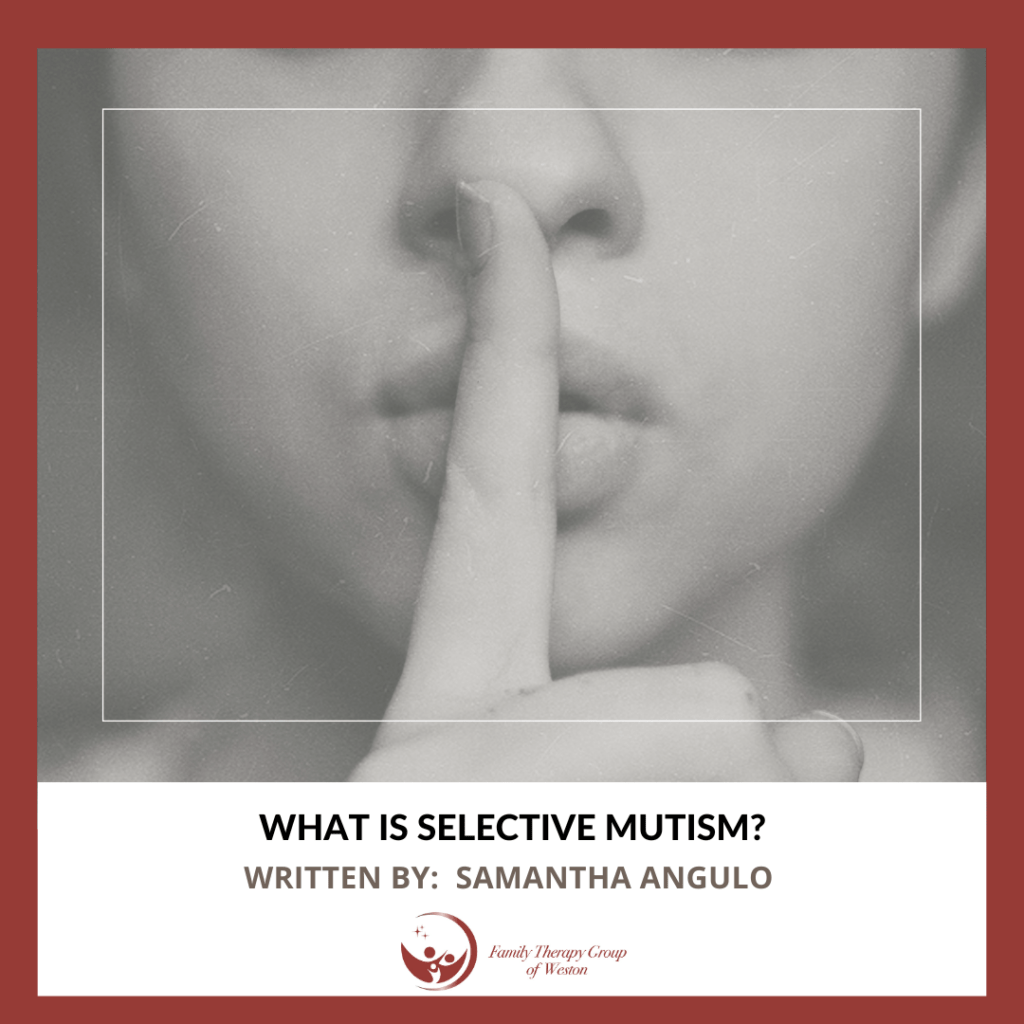
What is Selective Mutism?
Written by: Samantha Angulo
SM or Selective mutism is a mental health disorder characterized by a consistent failure to speak in social situations, especially situations in which someone might be expected to speak. This difficulty has to be present for at least one month, and most commonly develops in children before the age of five. With that said, SM is often not diagnosed until a child is in school. This is often because their lack of speech at school is more noticeable or may start interfering with how well they do.
SM is often misunderstood as a disorder.
One key thing to note is that individuals who have SM, can speak and will do so freely when they feel comfortable in a situation. Most commonly, children will speak freely to their parents, or other immediate family members, in the safety of their home. With that said, it isn’t that individuals with SM can’t speak, but rather that they struggle or refuse to do so in social situations due to feelings of anxiety.
Keeping that in mind, for someone who doesn’t have SM it may seem disrespectful to not respond when someone is speaking to them. Many parents worry that their child is being perceived as rude by others, because of their difficulty to speak. For someone without SM speaking to other people, or responding when someone is speaking to you, comes easily, often without a second thought.
However, for someone who has SM, speaking is the equivalent of facing their biggest fear. This leads to many behaviors to avoid speaking in social situations.
Here are some ways someone with SM might respond when expected to speak in a social situation:
-
In an attempt to feel less anxious, they might communicate nonverbally, instead of using their voice. In fact, many individuals with SM become professionals at nodding, pointing, gesturing, and using other nonverbal techniques to express themselves.
-
For some, they might switch from speaking to loved ones at a full volume at home to whispering or speaking inaudibly when they are in public spaces with people around.
-
Others may even ignore someone if they think they are talking to them, in an attempt to remove the pressure of responding.
-
Someone with SM might also freeze, feeling completely unable to respond when spoken to.
These behaviors often lead to family members and friends finding themselves speaking for the individual in social situations. Many people with SM have someone who will hop in and “save them” from having to speak. Although loved ones mean well in helping someone feel less anxious by answering for them, this also makes it so it’s harder for that person to speak up in the future – they know someone else might respond and get them out of the situation.
If you’re thinking that SM sounds a lot like social anxiety… you’re not wrong.
In fact, many children with SM can appear very shy, have fears of embarrassment, and anxiety when it comes to being in social situations to begin with! Because of this, social anxiety disorder is commonly diagnosed alongside SM, with about 70% of children with SM also meeting criteria for social anxiety disorder. The difference between the two lies in SM’s focus on situations where speech is expected, while social anxiety more generally leads to anxiety in situations where people are around, regardless of having to speak.
Every individual with SM is different.
Although many individuals struggle with speaking in social situations, it may look very different from person to person. Not only do responses differ in people with SM when expected to speak, but also the situations in which these symptoms arise. For example, one child with SM might have no problem speaking to others they are comfortable with one-on-one but may go silent in a group setting. Others may refuse to speak to adults but have no problem speaking to children their age or vice versa. The main thing to keep in mind is there is no one way that someone experiences SM.
While addressing SM may seem like an impossible task, there are things that you can do to overcome, or help a loved one overcome, SM.
According to the Selective Mutism Association (SMA), there are many treatment options for SM, most commonly using behavioral and cognitive-behavioral (CBT) strategies. Medication and speech-language therapy can also be beneficial for some individuals with SM. For more information, The SMA’s website has many resources available and often hosts webinars to discuss different aspects of SM in more detail.
If you or someone you know is struggling with SM symptoms, feel free to reach out to our team and schedule an appointment today.
SMA Website: https://www.selectivemutism.org







